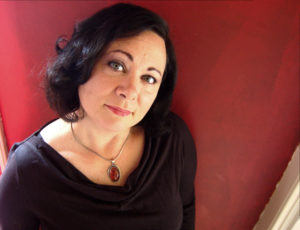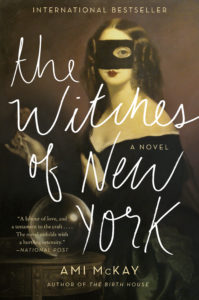How did you come across this story? What inspired you to write about it?
I began writing The Witches of New York because I couldn’t stop daydreaming about the protagonist from my previous novel, The Virgin Cure. She had another story to tell, replete with witches and ghosts. I finished writing it because halfway through, I discovered there were “witches” in my family tree, including my nine times great aunt, Mary Ayer Parker who was hanged at Gallows Hill during the Salem witch trials. Women of the 19th century were still under threat of being labeled “witch” if they dared step outside the norms of society by being too intelligent, outspoken, radical, or different. (Not unlike the “nasty women” of today.)
What were your main sources for your research? How did you organize everything? (That is, got any tips for fellow writers?)
I spent many happy hours sifting through the newspaper and image collections of the New York Public Library system and the New York Historical Society Library and Archives. I also read as many books on witchcraft in America as I could get my hands on as well as books on healing traditions and folk magic of the 19th century, chief among them, the scholarly works of historian Owen Davies.
As a result, a “big binder of witches” became my constant companion. Organized by topic—asylums, witchcraft, herbalism, tea superstitions, women’s suffrage, dream interpretation, demonology, Egyptomania, 19th century inventions, spiritualism, NYC landmarks—images, research materials, notes, character sketches, chapter outlines etc. All went into a large three-ring binder that I kept on my desk. I write first drafts by hand and tend to be a doodler, so having a place where I could deposit sticky notes and additional hand-written pages was the perfect fit for my writing process.
What were the biggest challenges you faced either in the research, the writing, or structuring the plot?
Finding the right balance between history, fiction and the fantastic. Although my previous novels contain elements of fairy tales and folk traditions, this is the first work I’ve written where ghosts, magic and questions about the afterlife play such large roles in the plot. Late-night conversations with friends and family about strange personal experiences and “things that can’t be explained,” helped bolster my resolve to not shy away from those things. In the end, I found that exploring the realm of the unknown while writing about specific historical events actually helped bring the tale into focus. It’s my hope that The Witches of New York does what all good fairytales do: immerse the reader in a world of magic to bring them closer to truth.
Every writer has to leave something on the cutting floor. What’s on yours?
There are several amazing connections between spiritualism in the 19th century and the suffrage movement. For example, Victoria Woodhull, the first woman to run for President of the United States, was also a practicing fortune-teller and clairvoyant. It was tempting to try to broaden the range of the book to include her story as well, but hers is a story that would’ve eclipsed the narrative of my witches in short order. While there are several nods to the suffragists of the 1800’s in the novel, Victoria didn’t make the cut.
Tag you’re it! What historical fiction author do you most admire? Why? Now forward these questions to him/her and we’ll share their answers next week!
Essie Fox, best known for her novels set in the Victorian era has recently entered the world of the silent film era with her novel, The Last Days of Leda Grey. I’ve always found her masterful ability to capture the setting, language and atmosphere of a chosen period to be both compelling and delightful.
 Ami McKay’s debut novel, The Birth House was a # 1 bestseller in Canada, winner of three CBA Libris Awards, nominated for the International IMPAC Dublin Literary Award, and a book club favourite around the world. Born and raised in Indiana, Ami now lives in Nova Scotia.
Ami McKay’s debut novel, The Birth House was a # 1 bestseller in Canada, winner of three CBA Libris Awards, nominated for the International IMPAC Dublin Literary Award, and a book club favourite around the world. Born and raised in Indiana, Ami now lives in Nova Scotia.

